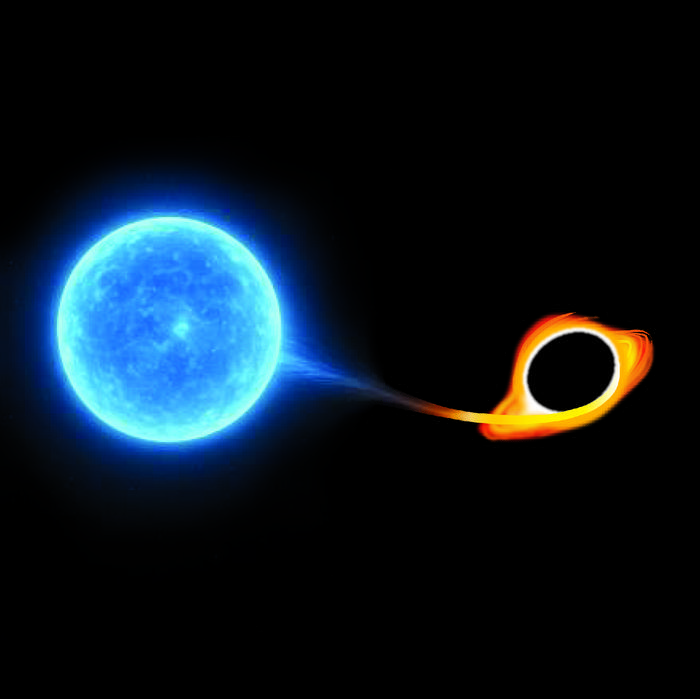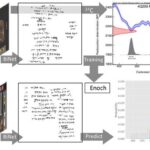
Astronomers have recently unveiled an extraordinary new class of cosmic phenomena far surpassing anything previously observed in terms of energy output and duration. These remarkable and enigmatic events, termed “extreme nuclear transients” (ENTs), emerge when massive stars—at least three times the mass of our Sun—venture perilously close to a supermassive black hole lurking at the heart of a galaxy. The gravitational forces from these black holes tear these stars apart in cataclysmic encounters, unleashing bursts of energy that shine with an intensity and persistence never before recorded. The discovery, led by researchers at the University of Hawaiʻi’s Institute for Astronomy (IfA), was recently published in the prestigious journal Science Advances, promising a profound shift in our understanding of both stellar death and black hole feeding mechanisms.
The fundamental nature of ENTs distinguishes them starkly from the previously known tidal disruption events (TDEs), in which stars are similarly shredded by black holes but with far less luminous outcomes. As Jason Hinkle, the lead author of the study, explains, these newly recognized transients are approximately ten times brighter than typical TDEs. While traditional TDEs demonstrate significant fluctuations and relatively brief flare-ups lasting months, ENTs exhibit remarkably smooth and enduring light curves, remaining bright for years. The sheer luminosity and temporal scale suggest a fundamentally different physical process driving their evolution, challenging prevailing models of black hole accretion physics.
In quantifiable terms, the energy liberated by ENTs is nothing short of staggering. The most extreme object catalogued to date, Gaia18cdj, radiated approximately 25 times more energy than the most powerful supernova explosions previously known. To put this in perspective, a typical supernova emits roughly the same amount of energy in a year as our Sun will over its entire estimated 10 billion-year lifespan. By contrast, ENTs can outshine the total yearly energy output of nearly 100 Suns. This immense output illuminates regions across cosmic distances previously inaccessible to such detailed study and provides a unique window into ultra-energetic astrophysical phenomena.
.adsslot_zWx1aoqQEX{width:728px !important;height:90px !important;}
@media(max-width:1199px){ .adsslot_zWx1aoqQEX{width:468px !important;height:60px !important;}
}
@media(max-width:767px){ .adsslot_zWx1aoqQEX{width:320px !important;height:50px !important;}
}
ADVERTISEMENT
These luminous beacons were first identified through a meticulous search of public transient surveys conducted by Hinkle, who targeted unusually long-lived flare events emanating from the nuclei of distant galaxies. Utilizing the European Space Agency’s Gaia mission archival data, two remarkable flare events with unusually slow brightening and fading profiles were found. Unlike conventional transients, these signals lacked signatures typical of known astrophysical explosions or outbursts, suggesting a new underlying process. The absence of common diagnostic features, such as emission lines indicative of supernova shocks, or the abrupt light curve variability characteristic of accretion instabilities, indicated these phenomena represented a heretofore undiscovered class.
The ensuing multi-year campaign to understand these enigmatic flares involved coordinated observations across the electromagnetic spectrum. Instruments ranging from the Asteroid Terrestrial-impact Last Alert System (ATLAS) to world-class facilities such as the W. M. Keck Observatory provided critical data enabling the team to analyze the time evolution, spectral properties, and host galaxy environments of these extreme nuclear transients. Importantly, their slow development—spanning years rather than months—required patience and persistence from astronomers seeking to unravel the physical mechanisms driving the prolonged energy output.
A key finding from these observations is that ENTs cannot be reconciled with the explosion physics of supernovae. Known supernova mechanisms typically involve the rapid collapse and subsequent explosive ejection of stellar material, releasing a photon burst that decays on timescales of weeks to months. The protracted brightness of ENTs, on the other hand, coupled with their unprecedented energy budgets, defies such a scenario. Instead, the data point compellingly to a slow accretion process of stellar debris onto supermassive black holes. Such a process differs from episodic accretion commonly observed in active galactic nuclei, which often display chaotic and stochastic variability rather than the remarkably smooth, steady light curves characteristic of ENTs.
The underlying astrophysics of these events appears to involve the gradual tearing apart of a massive star’s outer layers by extreme tidal forces as the star’s orbit brings it within the tidal radius of a central black hole. This stripped material then spirals inward, forming a transient accretion disk that radiates prodigious energy across the electromagnetic domain. Models suggest that relativistic effects, such as frame dragging near the event horizon as well as radiation pressure-mediated outflows, contribute to regulating the accretion rate and the consequent luminosity evolution. These insights afford astrophysicists novel opportunities to probe the intricate physics of black hole feeding regimes under extreme conditions.
Benjamin Shappee, associate professor at IfA and co-author, underscores the far-reaching implications of this discovery: “Because these events shine so brightly and remain visible over multiple years, they become valuable cosmic lighthouses for investigating the behavior and growth of supermassive black holes across vast stretches of cosmic time.” Observations of ENTs open a new frontier to explore epochs when black hole accretion was far more vigorous, as the universe was younger and galaxies were more actively forming stars and feeding their central black holes at rates significantly higher than in the modern cosmos.
Nevertheless, the detection of such rare events poses significant challenges. ENTs are estimated to be at least ten million times less frequent than conventional supernovae, underscoring the necessity of dedicated, long-term monitoring programs equipped with both wide-field capacity and high sensitivity. Future large-scale survey facilities, such as the Vera C. Rubin Observatory employing the Legacy Survey of Space and Time (LSST), and NASA’s Roman Space Telescope, are poised to revolutionize transient astrophysics by dramatically increasing the discovery rate of these phenomena, allowing comprehensive statistical analyses and triggering rapid follow-up observations crucial for detailed characterization.
The discovery of extreme nuclear transients reshapes the landscape of transient astronomy and black hole astrophysics. These intense and persistent flares both challenge and augment current theoretical frameworks, demanding new models that integrate tidal disruption dynamics, relativistic accretion flows, and radiative transfer to fully elucidate their origins and evolution. As Hinkle summarizes, “ENTs don’t only signify the violent demise of massive stars; they illuminate vital processes that drive the growth of supermassive black holes—the engines powering the formation and evolution of galaxies throughout cosmic history.”
As observational campaigns continue and theoretical models advance, the study of ENTs promises to unlock unprecedented insights into the interplay between massive stellar life cycles and the extreme gravity environments of galactic nuclei. This evolving field stands at the intersection of stellar astrophysics, high-energy phenomena, and cosmology, offering a remarkable testament to the richness and complexity of our universe.
Subject of Research: Not applicable
Article Title: Extreme Nuclear Transients: Unveiling a New Class of Ultra-Energetic Stellar Disruptions at Galactic Centers
News Publication Date: 4-Jun-2025
Image Credits: University of Hawaiʻi
Keywords
Stellar explosions, Black holes, Accretion discs, Supernovae, Stellar physics, Stars, Astronomy, Telescopes, Space telescopes, Observatories
Tags: black hole interactionsCosmic Phenomenaenergy output in astronomyextreme nuclear transientsgravitational forces in spaceHawaiʻi astronomy discoveriesmassive star explosionsresearch in astrophysicsScience Advances publicationstellar death processessupermassive black holestidal disruption events comparison


